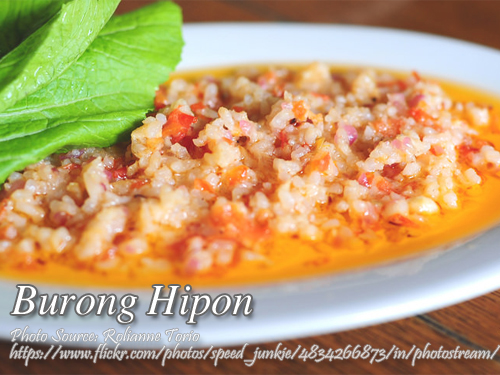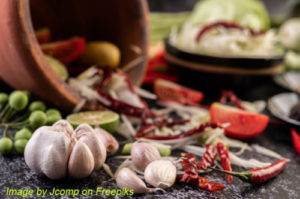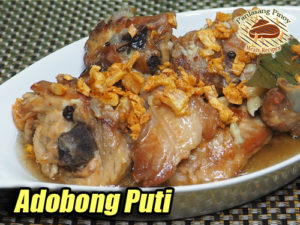This is one of the many versions of chicken and pork adobo and this version contains sweet tuba or coconut toddy. It is also known as coconut nectar. If you happen to know a local wine made from coconut toddy, it is the tuba, fermented and mixed with mangrove tree bark (called “barok”) to prevent turning it into vinegar. That red coloring and the bitter taste is the result of mixing that dried tree bark. The coconut toddy in it’s pure form is sweet and will turn into wine in a few days because of fermentation and eventually will turn to vinegar.
To cook chicken and pork adobo with coconut toddy; Season pork and chicken separately with ginger, salt and pepper, then add 3 tablespoons of coconut toddy. In a skillet or wok, heat oil and saute garlic until golden brown, add pork then cover. Let simmer until tender and golden brown, then remove from heat. Do the same procedure with the chicken. Stir together pre-cooked chicken and pork, add remaining coconut toddy, bay leaf, lemongrass and crushed peppercorns. Simmer until tender and season with salt and pepper according to taste.
How to Cook Chicken and Pork Adobo with Coconut Toddy
Ingredients
- 1/2 kilo pork belly
- 1/2 kilo chicken thigh
- 2 Tbsp. grated ginger
- ground sea salt to taste
- black pepper to taste
- 2 cups coconut toddy or coconut nectar, divided
- 2 Tbsp. vegetable oil
- 1 head garlic minced
- 1 bay leaf
- 6 bulbs lemongrass white part only, pounded and chopped finely
- 10 whole peppercorns crushed
Instructions
How to cook Chicken and Pork Adobo with Coconut Toddy:
- Season pork and chicken separately with ginger, salt and pepper, then add 3 tablespoons of coconut toddy.
- In a skillet or wok, heat oil and saute garlic until golden brown, add pork then cover.
- Let simmer until tender and golden brown, then remove from heat. Do the same procedure with the chicken.
- Stir together pre-cooked chicken and pork, add remaining coconut toddy, bay leaf, lemongrass and crushed peppercorns.
- Simmer until tender and season with salt and pepper according to taste.





